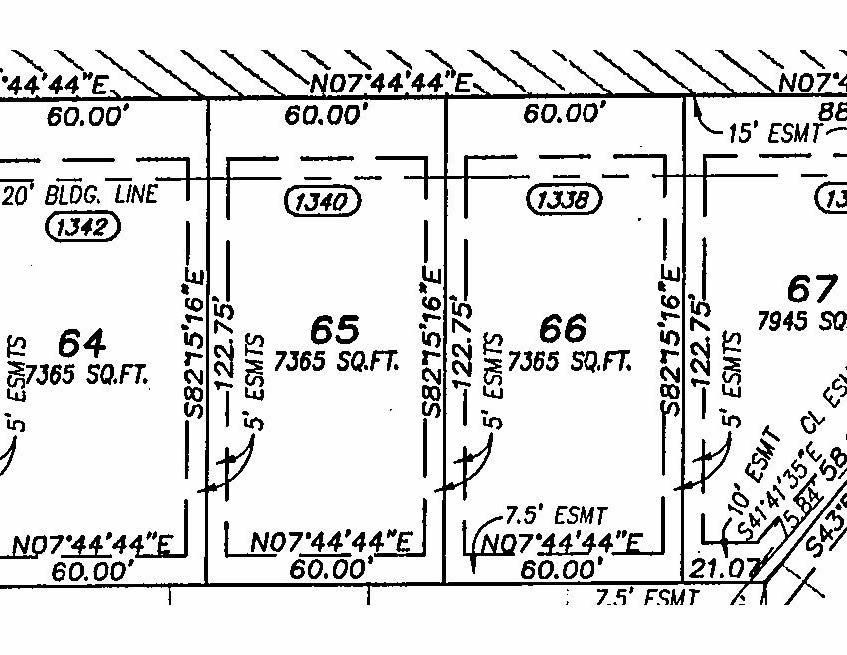Surveyors are licensed and governed by individual states and their statutes. On top of that, areas have their own trends and nuances that make them unique. There are not federally mandated requirements so a dotted line on a survey in Missouri may mean something completely different in Kansas.
Here are some common trends that you will see in the greater St. Louis Metro area based on drawings that we personally produce, along with what we have seen other companies produce:
- Solid black lines: These typically represent the outlines of property shapes and building footprints/wall locations.
- Blue lines: These lines typically represent items of improvement to the lot. Some common improvement items would include concrete, decks, brick, gravel, swimming pools, landscaping, etc.
- Green dashed lines: The space between two green dashed lines or a black line and a green dashed line are typically areas that are designed as easement areas. The space between the two lines is typically labeled in some fashion to advise of the width of the area.
- Black dashed/dotted lines: There are countless versions of dash and dot line combinations. They can be used to designate the calculated centerline of a road, the actual centerline or limits of the pavement, they may represent building and set back lines, or they can be used to show the line between 2 parcels. These lines typically have a label located along the line or are listed/shown in the legend
- Lines with an “x”: This is a common line type used to show and designate the location of fences. Colors of these lines can vary.
- Hatching or shading: Companies have typical hatchings that they use to represent items, such as using small dots inside of a concrete area, using angled lines to represent a deck area or using wave lines to represent the interior of a pool or pond. Sometimes a solid coloring of an area occurs, such as for a retaining wall. Look for a label to further identify the area.
- Use of red text: It is common to see items that may be a potential concern to be labeled in red (ie. a fence being located over the property line, or a portion of the house being located into an easement area).
Knowing how to read a survey drawing can be confusing. The name and contact information for the surveyor who performed the work should be listed on the drawing. They can be a valuable resource in understanding what all those lines mean.
Cardinal Surveying would like the opportunity to earn your business. They service the greater St Louis Metro area, have been rated A+ with the Better Business Bureau since 2003, have surveyed over 27,000 properties and are a family owned company who prides themselves on producing accurate results with exceptional customer service. They can be contacted via email at inbox@e23.bae.myftpupload.com or phone at 636.922.1001. They look forward to working with you for all your land surveying needs.

